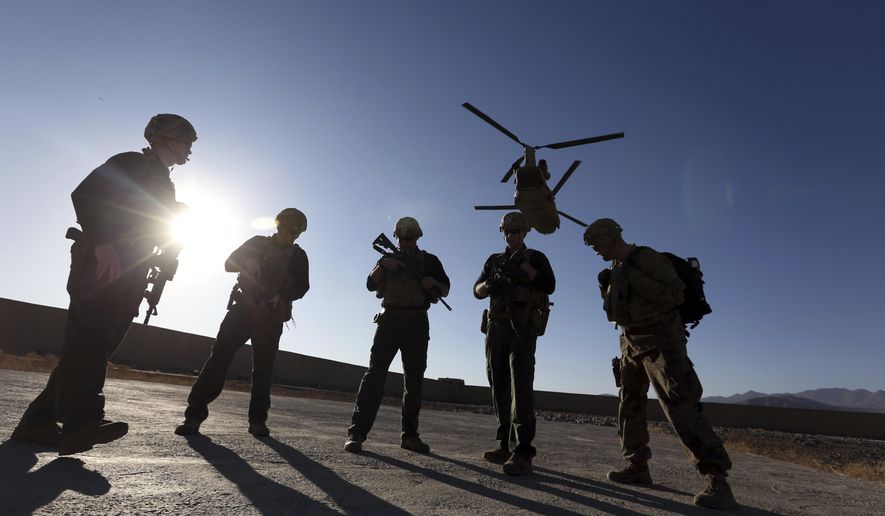The number of U.S. forces in Afghanistan has dropped to 2,500, acting Defense Secretary Christopher Miller said Friday, meeting the Trump administration’s goal to steeply reduce the number of American troops in the country ahead of Inauguration Day.
It’s unclear whether President-elect Joseph R. Biden will seek to uphold or continue to reduce the troop levels in his first months in office. While the former vice president has said he supports troop reductions and an end to the 20-year-long war, top military and intelligence officials have warned that a complete withdrawal could destabilize the region.
Mr. Miller, who is in his final week as acting Defense Secretary, said in a statement that the U.S. “is closer than ever to ending nearly two decades of war and welcoming in an Afghan-owned, Afghan-led peace process to achieve a political settlement and a permanent and comprehensive ceasefire.”
As part of a deal between the U.S. and the Taliban that was struck last February, the Taliban agreed to not allow Afghanistan to become a base of operations for terrorist groups and to halt attacks on U.S. personnel. In exchange, the U.S. agreed to drastically reduce its military presence in the country.
While the Taliban has picked up the pace of attacks against Afghan security forces, U.S. officials say there have been few, if any, direct attacks at American personnel.
The deal also called on the Taliban to begin formal peace talks with the U.S.-backed government in Kabul, though the two sides have struggled to get those negotiations underway.
The U.S. troop drawdown has come despite clear warnings by the Pentagon that Afghanistan remains a national security challenge.
A Pentagon report last year concluded that some remote areas of Afghanistan remain home to “terrorist sanctuaries” and some Taliban members routinely cooperate with extremist groups such as al Qaeda.
But despite the challenges, military leaders have maintained that the U.S. can accomplish its goal of peace in Afghanistan with the reduced troop numbers.
“The United States will continue to execute both our counterterrorism mission and the train, advise and assist mission in support of Afghan Security Forces working to secure peace in their country,” Mr. Miller said.
When the deal was struck nearly a year ago, the U.S. had about 13,000 troops in the country.
Under the National Defense Authorization Act that was passed by Congress earlier this month, the Pentagon is prohibited from using military funds to bring troop numbers in the country below 4,000 unless it receives a presidential waiver or defense officials present a report to lawmakers justifying a further reduction.
There is no public evidence that the Pentagon has met either of the requirements.
Mr. Trump in November ordered an additional withdrawal of American troops from Afghanistan and Iraq to be completed by Jan. 15. His order took effect before the annual defense policy bill was signed into law.
Mr. Miller said that the Pentagon remains capable of further reducing troop levels to zero by May of this year, although any additional withdrawals would be “conditions based.”
“This force reduction is an indication of the United States’ continued support towards the Afghan peace process and our adherence to commitments made in both the U.S.-Taliban agreement and the U.S.-Afghanistan Joint Declaration,” the acting defense secretary said.
“All sides must demonstrate their commitment to advancing the peace process.”
• Lauren Toms can be reached at lmeier@washingtontimes.com.




Please read our comment policy before commenting.